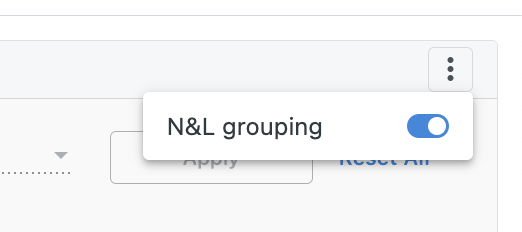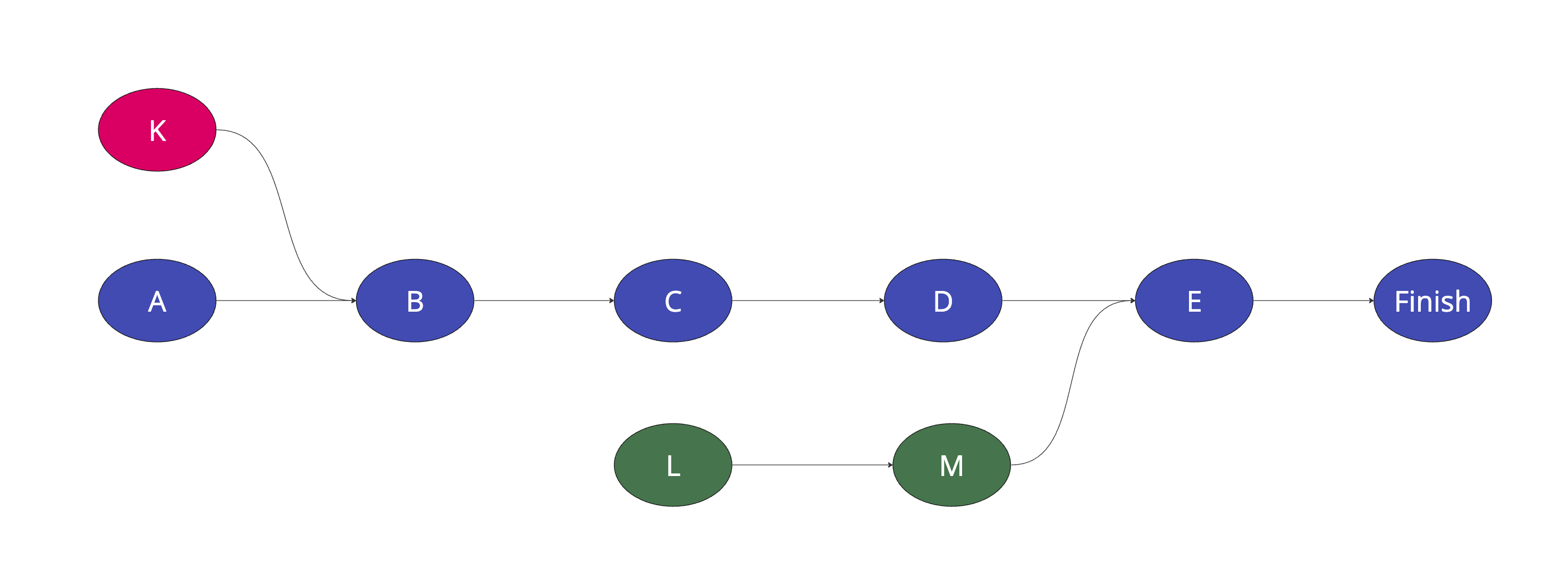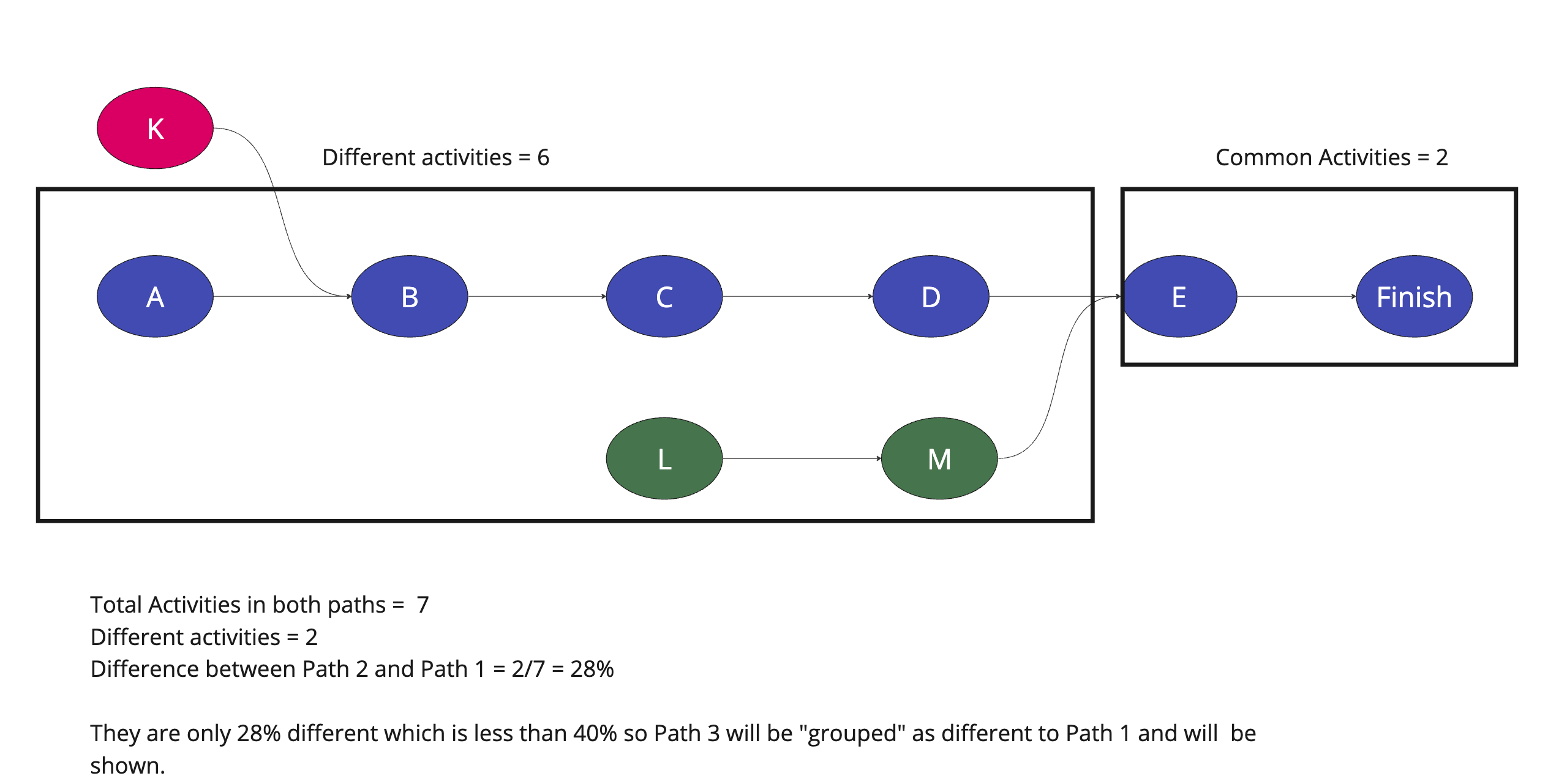What is N&L grouping in paths?
What does N&L grouping do?
When it's on it makes sure that the next most critical path has at least 40% different activities than the previous one.
When it's off it works like this:
- Path 1: Most critical path.
- Path 2: Second most critical path
- Path 3: Third most critical path
- Path 4: Fourth most critical path
- Path 5: Fifth most critical path
When it's on it works like this:
- Path 1: Most critical path.
- Path 2: Second most critical path that has at least 40% different activities that Path 1
- Path 3: Third most critical path that has at least 40% different activities that Path 2
- Path 4: Fourth most critical path that has at least 40% different activities that Path 3
- Path 5: Fifth most critical patht hat has at least 40% different activities that Path 4

What problem are we trying to solve?
Let's say that you have two paths to the end of the project. The two paths are 500 activities long each, but they are only different for 1 activity. So, you have:
- 499 activities in common
- 1 activity is different.
P6 would show you both of those paths as different, but they are not significantly different. In many cases this can just become clutter information that gets in the way. We wanted to give the user the ability to see 5 paths to an activity but those paths to be different in a meaningful way.
An example
Let's show a simple example to better explain this. Picture that we have the following network and we ask the software what are the paths to finish

With N&L grouping off:
If we have N&L grouping turned off the product will act exactly as P6:
- Path 1: A, B, C, D, E, Finish
- Path 2: K, B, C, D, E, Finish
- Path 3: L, M , E, Finish
In this case though Path 1 and Path 2 are too similar. So let's give it a go with N&L grouping 🚀
With N&L grouping on:
- Total activities in both Path 1 and Path 2 = 7
- Common activities = 5 (B,C, D, E)
- Different activities = 2 (K,A)
- How much different is Path 2 from Path 1? 2/7 = 28%
- This means that they are only 28% different which is less than 40%. Path 2 willl be "grouped" as too similar to Path 1 and will not be show

When it comes to Path 3 we have:

Therefore the final resutls will with N&L grouping will be :
- Path 1 : A, B, C, D, E, Finish
- Path 2: L, M, E, Finish
The path with the pink activitiy will be ommited as too similar to Path 1.
